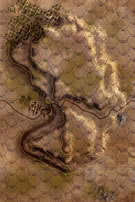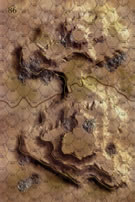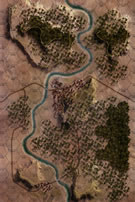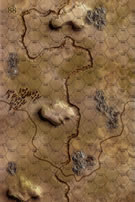
| Total | |
|---|---|
| Side 1 | 0 |
| Draw | 0 |
| Side 2 | 1 |
| Overall Rating, 1 vote |
|---|
|
4
|
| Scenario Rank: --- of 913 |
| Parent Game | Conquest of Ethiopia |
|---|---|
| Historicity | Historical |
| Date | 1936-03-31 |
| Start Time | 05:45 |
| Turn Count | 32 |
| Visibility | Day |
| Counters | 187 |
| Net Morale | 0 |
| Net Initiative | 3 |
| Maps | 4: 84, 86, 87, 88 |
| Layout Dimensions | 86 x 56 cm 34 x 22 in |
| Play Bounty | 209 |
| AAR Bounty | 227 |
| Total Plays | 1 |
| Total AARs | 0 |
| Battle Types |
|---|
| Hill Control |
| Inflict Enemy Casualties |
| Conditions |
|---|
| Hidden Units |
| Off-board Artillery |
| Randomly-drawn Aircraft |
| Reinforcements |
| Terrain Mods |
| Scenario Requirements & Playability | |
|---|---|
| Conquest of Ethiopia | Base Game |
| Introduction |
|---|
|
The combatants fought the last major battle on the northern front at Mai Ceu. Under the direct command of the Emperor the most modern Ethiopian forces ever assembled, assisted by groups led by other Rases, would engage the Italians in this apocalyptic struggle. This last attempt of the Ethiopians to inflict a clear defeat on the Italians aimed at duplicating their overwhelming victory at Adowa in 1896. All of the Ethiopian leaders present were descended from victors at Adowa, and felt themselves to be living symbols of their ancient Christian empire. The sires at Adowa included Ras Makonnen (father of the Emperor), Ras Mangasha (father of Ras Sejum), Ras Mangasha Atikim (father of Ras Chebeddè), and as for Ras Cassa, he himself fought there as a 15-year-old alongside his father. Great expectations preceded this battle, from the aging veterans of Adowa to the best-trained new combatants (British- and Belgian-trained officers, former King’s African Rifles, and St. Cyr’s graduates like Keniats Chifli, who during the battle directed the only modern battery on the Ethiopian side). A throng of Priests, Bishops and even determined female fighters rounded out the group. Meanwhile, the Italians and their Askari allies, well aware of the Ethiopian concentration, waited in their defensive works for the impending attack. |
| Conclusion |
|---|
|
This final Ethiopian army fielded significant numbers of artillery, anti-aircraft guns and, above all, officers educated in modern warfare by foreign military assistance missions. The famous Imperial Guard, Kebur Zabagnà, fought valiantly here for the Emperor. On the other hand, the Italians were fighting in improved positions, with a plethora of modern equipment, and intelligence assets that allowed them to know the Emperor’s intent in advance. The fierce Ethiopian warrior tradition would not be enough. Ethiopian morale ran high with the Emperor on the field. However, after a good initial rush that carried the outer works in some areas, stubborn defense by the Alpini eventually led a stalemate with heavy losses for the frontally-assaulting attackers. By early afternoon, reinforcing Eritrean battalions allowed the Italians to push back the attacking forces. Late in the afternoon the Negus attempted several other costly attacks but the redoubtable Italians and their Askari allies again repulsed them. At the end of the day the Emperor ordered the withdrawal of his spent army, leaving a few small contingents to cover the retreat. From now until the conquest of Addis Ababa, Marshal Badoglio faced no more battles. |

 COOE026
COOE026 


































